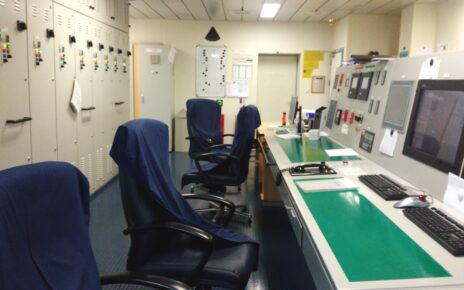In this blog post, we will discuss what happens when two generators are running in parallel and one of them loses excitation. Excitation is the process of providing a magnetic field to the rotor of a synchronous generator, which enables it to produce electrical power. When a generator loses excitation, it can no longer supply reactive power to the system and may become unstable.
two generators are running in parallel
To understand the consequences of losing excitation, we need to consider some basic concepts of parallel operation of generators. When two or more generators are connected in parallel, they must be synchronized in frequency, phase and voltage. This means that they must rotate at the same speed, have the same electrical angle and produce the same voltage magnitude. If these conditions are not met, there will be circulating currents and power imbalances between the generators, which can damage them or cause system instability.
When a generator is running in parallel with other generators, it shares the active and reactive power demand of the load according to its capability. Active power is proportional to the torque applied by the prime mover (such as a turbine or an engine) to the generator shaft, while reactive power is proportional to the excitation current supplied by the excitation system to the rotor windings. The active and reactive power output of a generator can be controlled by adjusting its speed and excitation respectively.

Now, let us see what happens when one of the generators loses excitation while running in parallel with another generator. There are two possible scenarios: loss of excitation with load rejection and loss of excitation without load rejection.
Loss of excitation with load rejection means that the generator loses both its excitation and its active power output at the same time. This can happen due to a fault in the excitation system or a trip of the prime mover. In this case, the generator will act as an induction generator and will draw reactive power from the system to maintain its magnetic field.
The other generator will have to supply more reactive power to compensate for this loss, which may cause it to overexcite or overvoltage. The induction generator will also increase its speed slightly above the synchronous speed, which may cause it to lose synchronism with the other generator and create oscillations in the system. To prevent these problems, a loss of field protection relay is used to detect the loss of excitation and disconnect the faulty generator from the system.
Loss of excitation without load rejection means that the generator loses only its excitation but not its active power output. This can happen due to a partial failure of the excitation system or a gradual decay of the magnetic field. In this case, the generator will act as an asynchronous motor and will draw both active and reactive power from the system to maintain its torque and magnetic field.
The other generator will have to supply more active and reactive power to compensate for this loss, which may cause it to overload or overheat. The asynchronous motor will also decrease its speed slightly below the synchronous speed, which may cause it to lose synchronism with the other generator and create oscillations in the system. To prevent these problems, a reverse power protection relay is used to detect the negative power flow and disconnect the faulty generator from the system.
In conclusion, losing excitation of a generator running in parallel with another generator can have serious consequences for both the generators and the system. It can cause overloading, overvoltage, overheating, oscillations and loss of synchronism. To avoid these issues, proper protection relays are needed to detect and isolate the faulty generator as soon as possible.



